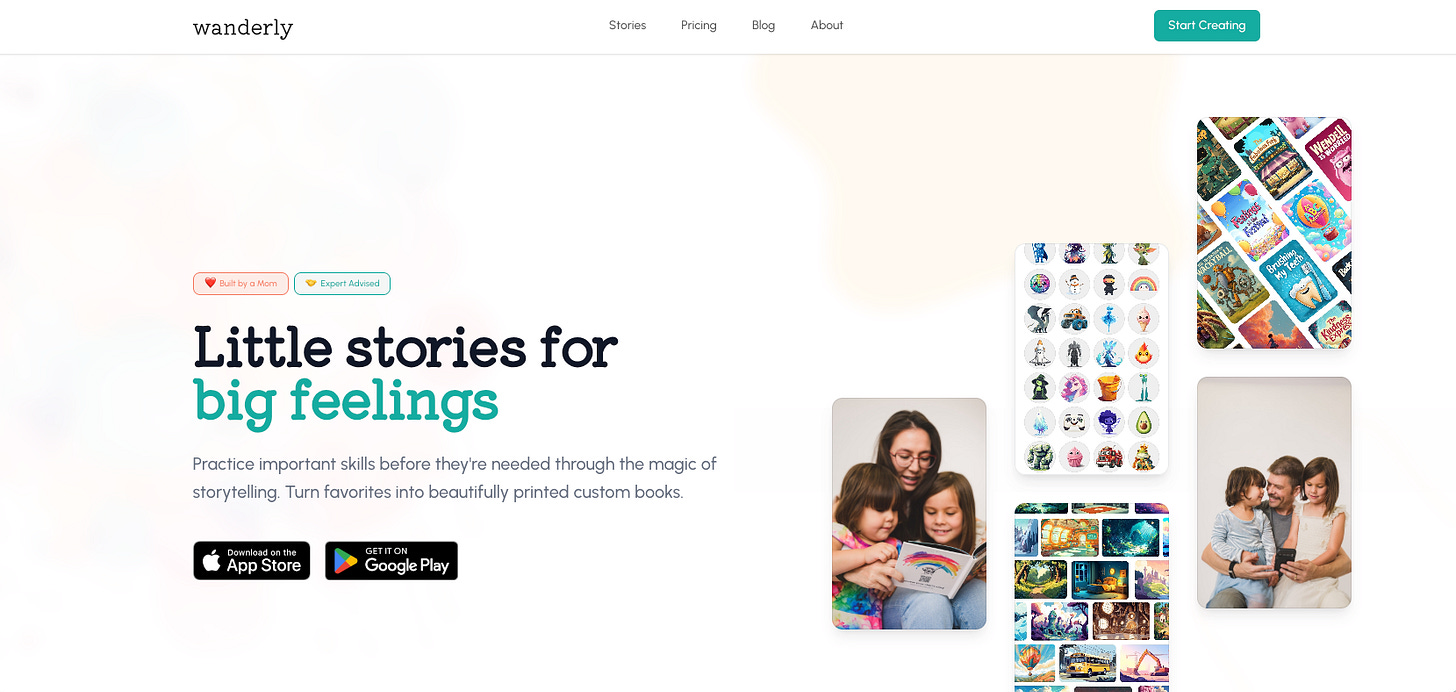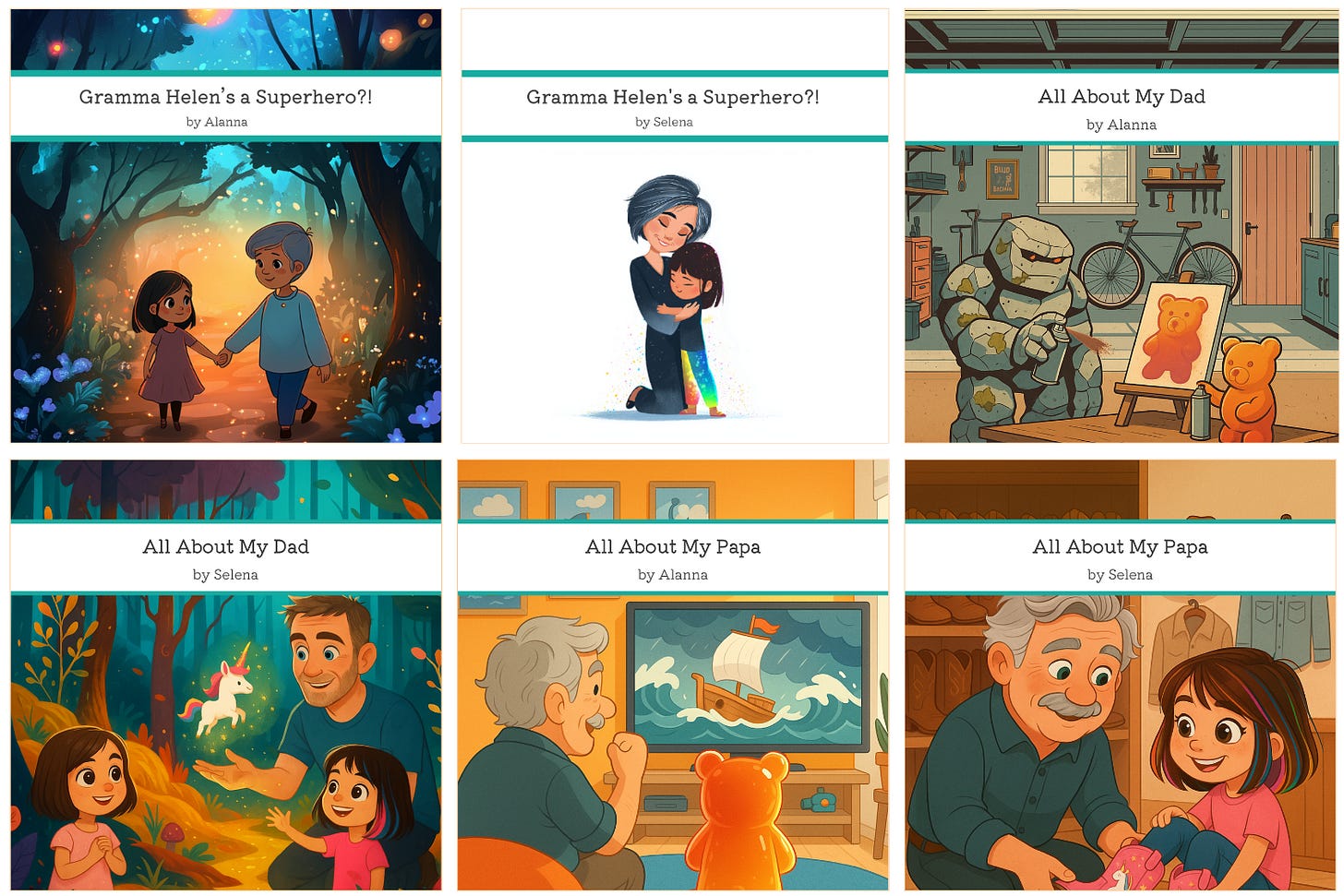My Marketing Experiments Report Card 🧪📋
A round-up of go-to-market experiments I tested over the last few months
The thing about being an entrepreneur is that if the right answer were obvious, someone else would have done it. To bring Wanderly to life, I’m trying a lot of things and seeing what sticks. I often bemoan to my husband that I wish that I just knew the answer to turn Wanderly into an overnight success. In response, he tells me that really I don’t; I wouldn’t find it nearly as much fun or fulfilling. I know he’s right, too. So while I spent the majority of my efforts over the last five months on a social media strategy, but I was still experimenting with other marketing strategies.
Here’s a round-up of some of the other things I tried, and how I think they turned out:
Classic Strategies
I pursued some “classic” strategies over the summer. None of them cost a lot of time, so I was at least able to eliminate these as reasons why my funnel was leaky.
Email Campaigns - Instead of giving stories away for free, I now have a daily free story, and I ask for an email address to unlock all stories + story credits. I collaborated with a copywriter to refine my positioning and he pushed me to be unapologetic about upselling Premium. I also reactivated my dormant email list into a marketing channel, and while I still haven’t unlocked conversions, I do have a healthy open rate and am optimistic about this channel being something to invest in. Long-term optimism: 7/10.
Search Engine Optimization (SEO) - During the holidays last year, I replaced my Wix website (which was very brittle) with my own, but I didn’t realize that doing so would damage how Google and other search engines understood my site1. I also thought that creating pages for each story and some blog posts might help people looking for niche content find Wanderly. I refreshed my homepage and added some indexable pages2, but I haven’t really seen any changes in search result clicks (turns out that the tail isn’t long enough to make my site or story pages bubble to the top). Long-term optimism: 3/10.
Co-Marketing with Illustrators - I sent some messages on Instagram to children’s illustrators to see if they were interested in collaborating with Wanderly, and while a few of them expressed interest, I quickly ran up into a walls: The Society of Children’s Book Authors and Illustrators have an anti-AI policy preventing members from collaborating with any AI projects, and nailing down a compensation strategy proved difficult with my book publishing model. Long-term optimism: 1/10.

Exploring My Network
I’m the mother of a 7-year-old and a 3-year-old; i.e., I am building for myself and people like me, and I talk to people like that every day. I’m a bit shy about asking folks in my community for favors, but as I’ve become more acclimated to my school community and Wanderly has improved, I’ve been emboldened to try new things.
Local School Marketing - I’ve tried a couple of times to reach out to my local community, including telling friends about Wanderly, posting to the parent chat, and putting up flyers. Results were mixed; I would say people are very kind to me personally, but people in my community are not enthusiastic about trying out screens with their kids. This has been a repeated piece of feedback from people I know, but I also think that there are communities that are less screen-avoidant and that the pendulum is swinging away from anti-screen and more towards a conversation about content quality. However, I never would have received Maestra Ana’s amazing testimonial if I hadn’t posted the preschool flyer, and I occasionally receive feedback from friends using Wanderly. I think it’ll be a more useful channel once I have more word-of-mouth recommendations or formal endorsements. Long-term optimism: 5/10.
Talking to Therapists & Educators - I’ve always been bullish on the idea that Wanderly provides children with a safe space to explore emotions and behaviors, as they are the ones making choices in a story and can change their decisions. This aligns well with social-emotional learning, so I’ve spoken with several therapists and educators in my personal network over the past few months. I’ve received optimism from these professionals, but I haven’t yet found someone to say, “Yes, I’d love to use this as part of my practice” and commit to regular usage. However, the openness and enthusiasm aren’t something I should ignore, because they might have a better business and growth model than a direct-to-consumer approach. Long-term optimism: 6/10 (but requires a lot more investment).
Content Marketing
When I updated my story engine in April, I was able to build out a bookshelf of stories. It’s a scrollable view of covers with story titles and a teaser image. I made the most of it by trying out a variety of different stories this summer: I created a fill-in-the-blank story for my eldest daughter. I wrote many different bedtime stories. My husband drafted some of the silliest stories that got lots of laughs. I wrote stories meant to teach about emotions. I even wrote a story to get my youngest to stop sucking her thumb (we’ve had lots of good conversations, but she’s still sucking it). None were breakthroughs, but I learned new strategies for how to use my content engine and what made my family and other families think and laugh. Here were the biggest takeaways:
Gifts for Mother’s and Father’s Day - These were the most joyful books I made over the last few months, and the most well-received. In addition to making them for friends, I leaned in on creating books for my immediate family. These books also really stretched the limits of AI-image generation for the likeness of real people (especially my Asian mom, who is technically a grandma but doesn’t look like it). Long-term optimism: 8/10 if I continue with books; 3/10 if I don’t.
Social Stories - Through chatting with therapists and educators in my network, I encountered a flavor of personalized stories called social stories. They’re often used with neurodivergent children to help them understand their routines, how to handle new situations, or for behavior modification, but can be used by any child to help them self-manage. While I think I’m still far from Wanderly being a universal tool for social stories, the themes and style have helped me draft stories that seem to resonate with parents. Long-term optimism: 6/10.
The Bookshelf - I validated that the bookshelf is a great way to understand what content people are interested in, and that when kids are using it independently, they love the variety. Long-term optimism on the bookshelf: 10/10.

If you’re reading between the lines here, two (or more!) thoughts might occur to you: 1) It’s very possible that I just didn’t commit enough to one strategy to drive results, or 2) I’ve invested a lot in marketing channels, but if I don’t have the right marketing value and positioning for Wanderly, channels don’t matter. I think both are possible. There’s a bit of a chicken-and-egg problem when searching for product marketing fit. Is it that the product isn’t right yet? Or that you’re not reaching people right yet?
I have a hypothesis I’m excited to start testing. The new hypothesis combines the best of what I’ve learned from my social media explorations and experiments, addressing both product positioning and user acquisition. My gut is pulling me in this direction, and I’m going to trust it.
But since that deserves its own post, you’ll just have to open my next newsletter to find out what I’ll be working on this winter. ☺️
I rewrote my website last year using React, which renders content client-side in the browser rather than on the server, making it harder for search engines to index efficiently.
I used Next.js via Vercel, which solves the SEO problem by delivering pre-rendered HTML to search engines and made it easier for me to add SEO metadata.


It’s amazing to hear all the different marketing paths you’ve explored. I always find marketing to be my weakest PM area, and it holds me back from really promoting my stuff or starting projects that need promotion.
Laura, I worked on Google Tag Manager as a PMM on the buy side DoubleClick team. Our paths must have crossed. Hello! I’m excited to hear about your entrepreneurial journey.